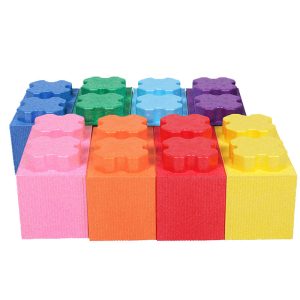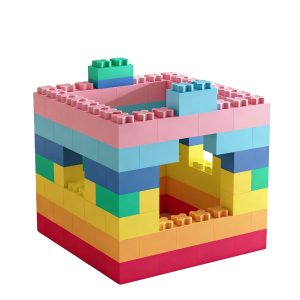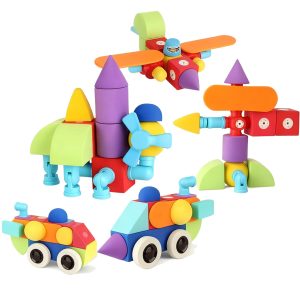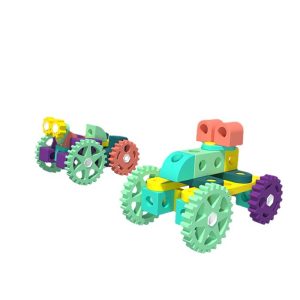How to Choose Building Blocks for 2-3-Year-Olds? Don’t Overlook These 3 Criteria—From Safety to Difficulty
When choosing building blocks for 2-3-year-olds, parents often struggle between “wanting their kids to have fun” and “worrying about safety or excessive difficulty.” Too-simple blocks may be abandoned after a few plays, while overly complex ones can frustrate kids. Wooden blocks might have splinters that scratch little hands, and plastic ones could pose risks if chewed on… In fact, you can easily pick the right blocks for young toddlers by focusing on 3 core criteria: safety, difficulty suitability, and play versatility.
Criterion 1: Safety Comes First—Pay Close Attention to These 3 Details
Children aged 2-3 are in the “oral stage” and “motor skill sensitive period.” The safety of building blocks directly affects their health and your peace of mind. Focus on these 3 aspects:
- Prioritize “soft, chew-safe” materialsAvoid hard wooden blocks (which can break and cause splinters) or regular plastic blocks (that may contain BPA). Opt for EVA foam or EPP materials instead—these are lightweight and soft, so kids won’t hurt their gums when chewing, and they won’t make loud noises when dropped (no disturbance to others). For example, Blockfty’s EVA Magnetic Building Blocks are made of food-grade EVA and certified by China’s 3C safety standard. Many moms have tested them and confirmed, “I feel at ease when my baby chews on them.”
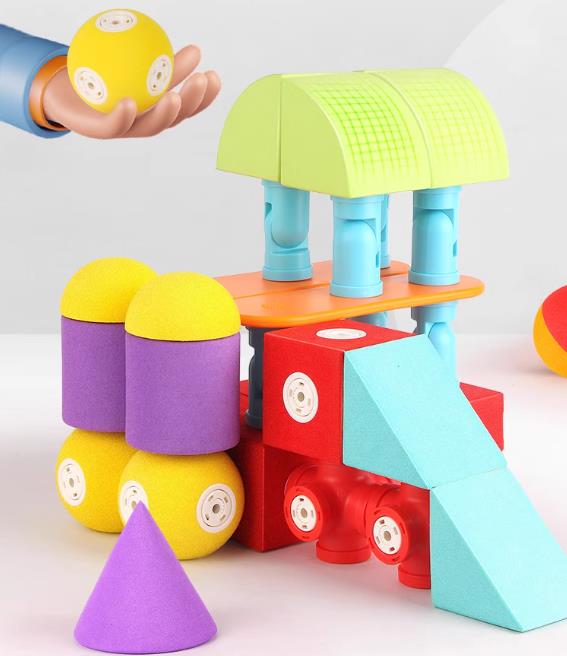
- Edges must be “completely rounded”Toddlers have delicate skin, so the edge treatment of blocks is crucial. Qualified blocks should feature fully rounded edges—they feel smooth and burr-free when touched, and some (like EVA ones) can even be slightly pressed without deformation. This prevents scratches when kids grasp or drop the blocks.
- Avoid “small parts” in accessories; magnets must be “fully enclosed”2-3-year-olds love picking at small parts. Detachable accessories like “tiny wheels” or “little eyes” on blocks risk being swallowed by mistake. If you choose magnetic blocks, ensure the magnets use a fully enclosed design (e.g., the magnets in Blockfty’s Magnetic Building Blocks are completely embedded in the foam and won’t fall off even if kids pull hard), preventing accidental ingestion.
Criterion 2: Difficulty Should Be “Within Reach with a Little Effort”—Too Easy or Too Hard Leads to Waste
Toddlers aged 2-3 are just developing fine motor skills. If block difficulty is mismatched, kids will either “get bored and throw them aside” or “get frustrated when they can’t build.” Judge suitability by these two indicators:
- Piece size: Larger is friendlier—at least 5cm in diameterYoung toddlers haven’t mastered flexible grasping yet. Blocks smaller than 3cm in diameter are easy to drop and increase choking risks. Choose large-sized pieces (over 5cm in diameter)—kids can grip them easily and align them correctly when assembling. Blockfty’s 65-piece EVA Magnetic Building Blocks have individual pieces 6-8cm in size, perfect for small hands. Moms feedback, “My baby can pick them up and assemble them on their own.”
- Assembly method: “No-fuss” is best—avoid complex snapsDon’t prioritize “training difficulty”; 2-3-year-olds need “quick a sense of accomplishment.” Choose blocks that use magnetic adsorption or simple press-to-assemble (e.g., EVA blocks stick together with a light press, and magnetic blocks attract automatically when close). Avoid designs that require “aligning snaps + pressing hard”—these easily frustrate toddlers.
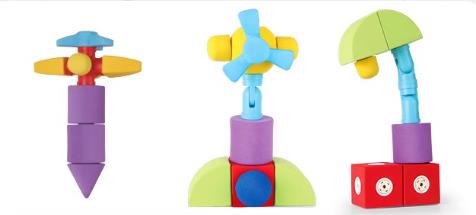
- Number of pieces: 50-80 is ideal—too many cause confusionFewer than 30 pieces get boring quickly, while more than 100 pieces overwhelm kids. A set of 50-80 pieces lets them build simple shapes (e.g., small houses, little trains) without feeling stressed.
Criterion 3: Play Versatility—Avoid “Ending Up Unused After 3 Months”
Toddlers grow fast; blocks with only one playstyle will be discarded soon. When choosing, “look ahead” and focus on these two points:
- Supports both “2D flat” and “3D 立体” buildingInitially, kids may only lay blocks flat to make “a road” or “a square.” Good blocks should let them gradually try 3D building (e.g., stacking, enclosing). For example, Blockfty’s EVA Magnetic Building Blocks can be laid flat to form numbers or letters, and magnetically stacked into “3-story towers” or “small caves.” Kids can play with flat designs at 1 year old and 3D ones at 3—maximizing usage.
- Compatible with “themed accessories” to add freshnessPlain geometric blocks get boring over time. Blocks that pair with simple themed accessories (e.g., animal shapes, toy car bases) stimulate kids’ imagination. For instance, EVA blocks with animal parts let kids build a “zoo”; those with wheels let them assemble “little trains”—adding flexibility to play.
Warning: Avoid These 3 Types of Blocks for 2-3-Year-Olds
- Blocks with “small holes”: They risk pinching little fingers and trapping dirt during cleaning;
- Blocks requiring “assembly tools” (e.g., screwdrivers, small screws): Tools are too small and may be swallowed;
- Blocks with “sequins or painted patterns”: Paint may peel off and be licked by kids. Prioritize “unprinted” or “food-grade ink printed” options.
Summary: The “Best Choice List” for 2-3-Year-Olds’ Building Blocks
If you screen by the above criteria, Blockfty’s 65-piece EVA Magnetic Building Block Set is an excellent option:
✅ Food-grade EVA material + fully rounded edges—safe for chewing and grasping;
✅ Large pieces + magnetic adsorption—kids assemble easily without frustration;
✅ 65 pieces (just the right amount)—supports both flat and 3D building, and pairs with simple shapes (e.g., small houses, little animals) for use up to age 3+.
When choosing blocks for toddlers, remember the three principles: “safety first, suitable difficulty, and long-lasting playability.” This protects your child’s curiosity and saves you from wasting money—after all, the best blocks are the ones your baby will play with repeatedly!

